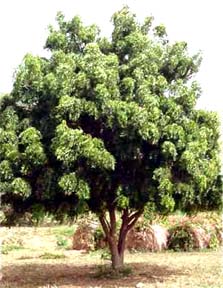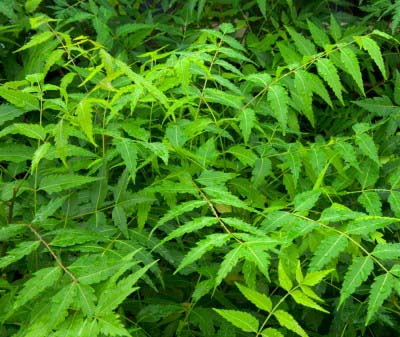Dec 25, 2025
Dec 25, 2025
 Neem, also known as nimba or margosa, is regarded by the ancients and modern science alike as a powerful healing herb with diverse applications. Described in the Ayurvedic texts as sarva roga nivarini - that which keeps all diseases at bay or arishtha - reliever of disease - Neem has been used in the Ayurvedic tradition for thousands of years to maintain health. The roots, bark, gum, leaves, fruit, seed kernels and seed oil are all used in therapeutic preparations for both internal and topical use.
Neem, also known as nimba or margosa, is regarded by the ancients and modern science alike as a powerful healing herb with diverse applications. Described in the Ayurvedic texts as sarva roga nivarini - that which keeps all diseases at bay or arishtha - reliever of disease - Neem has been used in the Ayurvedic tradition for thousands of years to maintain health. The roots, bark, gum, leaves, fruit, seed kernels and seed oil are all used in therapeutic preparations for both internal and topical use.  Neem leaves are regarded by Ayurvedic healers as an effective internal cleanser. Neem leaves have a powerful purifying effect on the blood and help cleanse the liver and skin of toxins. Neem leaf tea with a dash of honey can help soothe a dry irritated throat.
Neem leaves are regarded by Ayurvedic healers as an effective internal cleanser. Neem leaves have a powerful purifying effect on the blood and help cleanse the liver and skin of toxins. Neem leaf tea with a dash of honey can help soothe a dry irritated throat. Shreelata Suresh is a yoga instructor from the Bay Area, and she writes on yoga and Ayurveda for different publications. To subscribe to free newsletters on Ayurveda, or for more information, please visit http://www.ayurbalance.com.
Disclaimer:
07-Nov-2004
More by : Shreelata Suresh